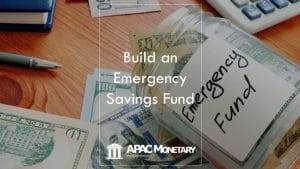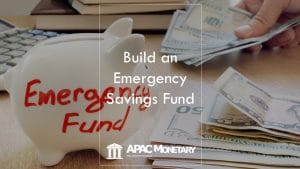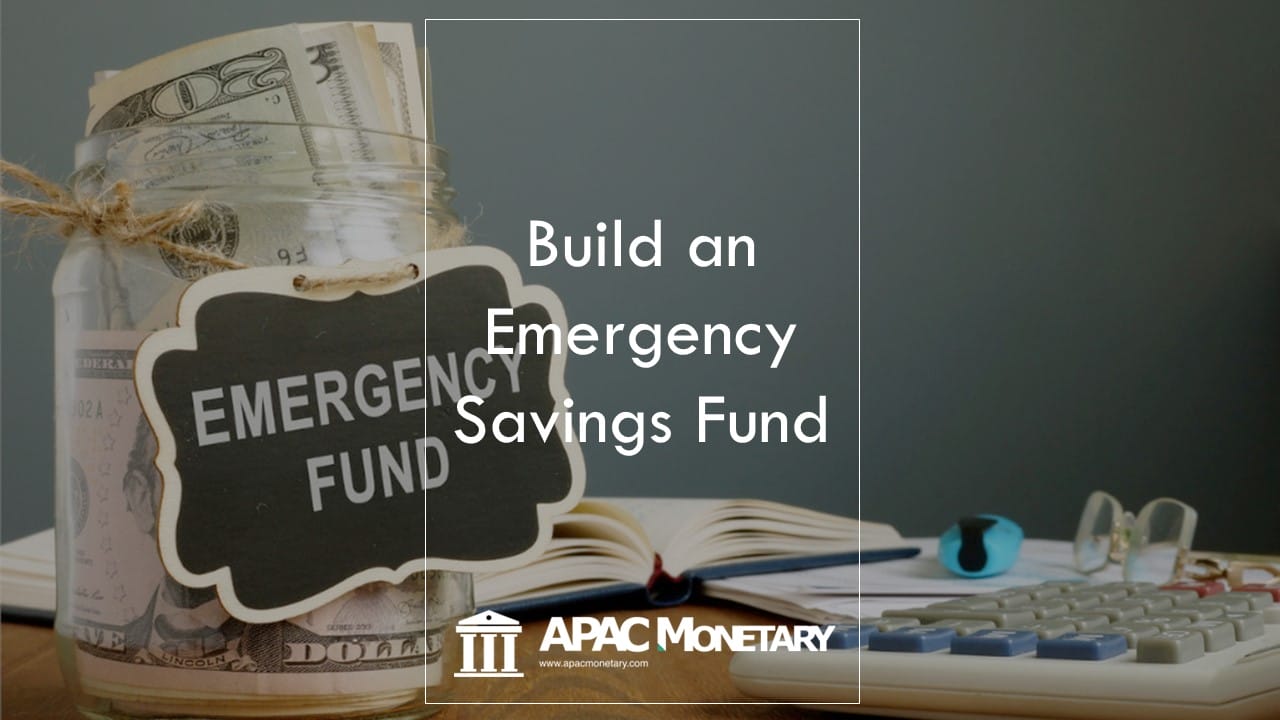Table of Contents
A lot of people in Australia, New Zealand, and South East Asia are looking for ways to save money in the event of an emergency. But what if you don’t have any money saved up? How do you get started? This article will teach you how to build an emergency savings fund, step by step. By following this guide, you can create a small savings account that will help you cushion yourself in case of an unexpected expense.
What is an Emergency Savings Fund?
An emergency savings fund is a bank account that you open in order to save money in the event of an unexpected financial crisis. An emergency savings account can be used to invest your money, pay bills, or cover unexpected expenses.
How to Build an Emergency Savings Fund?
In order to build an emergency savings fund, you will first need to create an emergency savings account at a bank. You can find a bank by searching for an “emergency saving account” on bank websites or by calling customer service.
After you have created your emergency savings account, you will need to follow these steps:
1) Set up automatic withdrawals so that you can easily save money without having to think about it.
2) Add funds into your emergency savings account as needed.
3) Use your emergency savings account to save money on your bills and expenses.
How to Save for an Emergency?
To save for an emergency, first, build a savings account. This is where you put your money so that it can be used in the event of an unexpected financial crisis. Many banks offer free accounts that allow you to save up to $5,000 per month.
In order to save more money, try to set aside at least 2-6 months’ worth of income in your account. This will help you cover any unexpected costs and ensure that you have enough saved up should something happen.
Save for an emergency by using a checking account. You can use this method to save on things like groceries, bills, and car rentals. In addition, many banks offer free checking accounts with small balances.
Save for an emergency by using a savings bond. A savings bond is similar to a payday loan, but instead of borrowing money, you will be lending the bond against future earned income. Bonds can be helpful in situations such as rare emergencies or when there are high-interest rates available from other sources.

Where to save your money for your Emergency Savings Fund?
Saving money is always a good idea, but it’s especially important to have an emergency savings fund. This is money you can access quickly in case of an unexpected expense. So where should you save your money for this purpose?
Save for an Emergency by Using High-Yield Savings Account
One option on how to build an emergency savings fund is a high-yield savings account. These accounts offer competitive interest rates and can be accessed easily online or through a mobile app.
Saving for an emergency fund is one of the most important steps you can take to protect your finances. A high-yield savings account is a great saver and safety net for Australians, New Zealanders, and Asians. These accounts offer competitive interest rates, making it easy to grow your savings quickly. When choosing a high-yield savings account, be sure to look for one that has no monthly fees and offers a competitive interest rate.
Asians, Aussies, and NZ Kiwies may also consider an account that allows them to make deposits automatically, so they don’t have to worry about forgetting to save. By setting aside money each month in a high-yield savings account, they can build a cushion of cash that can help them cover unexpected expenses. This can be especially helpful if they experience a financial emergency or unplanned events such as a job loss or unexpected medical bills.
A savings plan is an excellent safety net. So keep your emergency fund and open an online savings account now.
Save for an Emergency by Using a Short-Term Certificate of Deposit
Another option on how to build an emergency savings fund is to invest in a short-term certificate of deposit (CD). This type of investment typically has a higher yield than a traditional savings account, but you may have to wait longer to access your funds.
A short-term certificate of deposit, or CD, is a great way to save for an emergency. CDs offer a higher interest rate than a standard savings account and are FDIC insured. You can typically choose a term of anywhere from three to six months. This type of CD is ideal for those who want a safe place to park their money and earn a little bit of interest.
Save for an Emergency by Using a Savings Bond.
Another option how to build an emergency savings fund is to use a savings bond. With a savings bond, you can gradually save money over time, and the money will be available when you need it.
To save for an emergency through a savings bond, provide some extra information about your budget and expectations when it comes to saving money (e.g., 20% expected return on investment). The bank will then invest the money in a securities firm that will pay out interest checks based on how much money you have saved up each month, something that can really add up over time!
Another advantage of using a savings bond is that the interest earned on the bond is tax-free. This means that you can keep more of your hard-earned money in your pocket. To get started, set a goal for yourself of accumulating at least three months’ worth of living expenses in your emergency savings fund. Then, start saving by buying a series EE or I Savings Bond.
You can buy Savings Bonds at most banks or online in the U.S. If you are living in Australia, Singapore, India, or the Philippines, you can buy bonds through your local broker or online.

Save for an Emergency Savings Fund by Using a Money Market Account.
A short-term money market account is another option on how to build an emergency savings fund. This type of account offers a higher yield than a traditional savings account, and your money is still easily accessible if you need it.
To start building your emergency fund, transfer some of your spare cash into a money market account. You can gradually increase the amount over time until you have saved enough to cover at least three months’ worth of expenses.
Keep in mind that you should only use your emergency fund for true emergencies, such as loss of income or unexpected medical costs. Don’t let yourself get tempted to spend the money on non-essentials!
Save for an Emergency Savings Fund by Using Treasury Bills
It is always important to have some money saved away for emergencies, and Treasury bills in another option on how to build an emergency savings fund. By investing in Treasury bills, you can create an emergency savings fund that will provide you with a cushion in case of unexpected expenses.
If you’re looking for a place to park your money that offers both security and liquidity, T-bills may be the right choice for you. T-bills are backed by the full faith and credit of the U.S.
Treasury bills are a low-risk investment, and they offer a stable return that can help you cover unexpected costs. Another advantage of Treasury bills is that you can access your money quickly if needed.
If you need to use your emergency savings fund, you can sell your Treasury bills at any time and receive your money within days. This makes it easy to access the money when you need it most.
Finally, Treasury bills are a tax-advantaged investment. You can deduct the interest payments on Treasuries from your taxable income, which can save you money on your taxes.
Save for an Emergency Savings Fund by Using Mutual Funds for Rainy Days
Mutual funds can be a great option on how to build an emergency savings fund, especially during an economic crisis or global recession. Because you can invest in a variety of different mutual funds, you can choose one that will grow with the market and provide you with stability if an emergency arises. Additionally, by setting up a recurring contribution to your mutual fund account, you can make saving for an emergency much easier on your budget.
How much money should you save?
The answer to how much money you should save for your emergency savings fund largely depends on your personal circumstances. However, most experts generally recommend having anywhere from 3-6 months of living expenses saved up in case of an emergency.
If you have a regular income and relatively few expenses, you may be able to get away with having a smaller emergency savings fund. However, if you’re self-employed or your income is irregular, you’ll want to aim for the higher end of that range or even more.
In addition, you should take into account any specific risks that are unique to your situation. For example, if you live in an area that’s prone to natural disasters, it’s a good idea to have extra savings set aside to cover potential costs associated with those events.

How to make it easier to save money?
One of the best ways to make it easier to save money for your emergency savings fund is to make small changes in your spending habits. For example, try packing your lunch for work instead of buying food outside. This can save you anywhere from $5-10 per day, which adds up to $150-300 per month!
You can also cut back on your entertainment budget by cooking at home or going for walks instead of going out to eat or watching movies. By making small changes in your spending habits, you can easily free up some extra cash to put towards your emergency savings fund.
Another way to make it easier to save money for your emergency savings fund is to automate your savings. Many banks allow you to set up automatic transfers from your checking account into a savings account. This way, the money is transferred automatically each month without you having to do anything!
Conclusion: How to build an emergency savings fund
Making sure you have an emergency savings fund is important for both your financial security and your future. By saving for an emergency, you are creating a separate savings as emergency stash to cover three to six months of your expenses such as home loans, car repairs, living costs, and medical bills.
The emergency savings goal of creating a bank account for your emergency fund is to cushion the impact of untoward incidents. If an Australian mother lost her job, a NZ Kiwi father of two got into a car accident, or a Filipino farmer lost his crops due to typhoon, they have a saver account that they can run into. Emergency stash and emergency cash saver are good money habits that Asians, Aussies, and NZ Kiwis must learn.
Emergency savings fund can help protect yourself from unforeseen expenses and keep your family safe. There are many different ways to save for an emergency, so it’s important to find a strategy that works best for you. You can use a checking account, a savings bond, or a money market account to save for an emergency. It’s also important to get help from a financial advisor in order to create a budget and save as much as possible.










